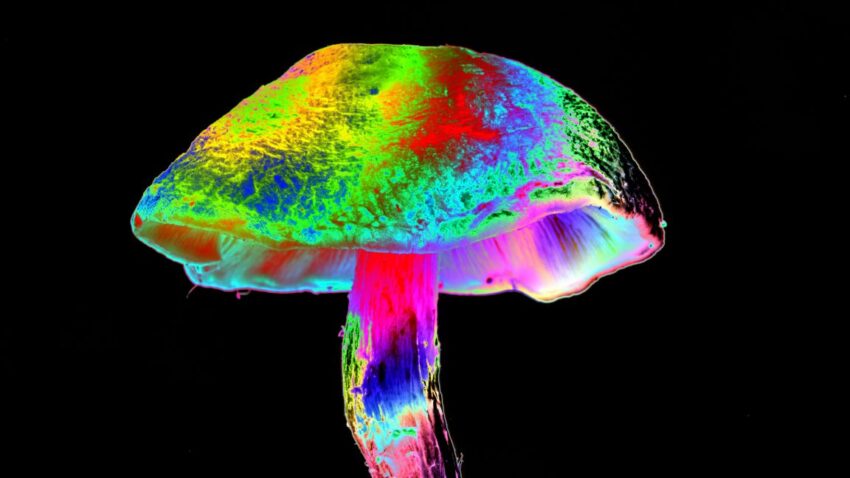
how different mushrooms learned the same psychedelic A recent study reveals that various mushroom species have independently evolved the ability to produce the psychoactive compound psilocybin, shedding light on their ecological roles and potential medical applications.
how different mushrooms learned the same psychedelic
Understanding Psilocybin and Its Historical Context
Magic mushrooms, known for their psychoactive properties, have been utilized in traditional ceremonies and recreational settings for thousands of years. The primary active compound in these mushrooms is psilocybin, which the human body metabolizes into psilocin, the substance responsible for the hallucinogenic effects. The historical use of psilocybin dates back to ancient cultures, particularly among indigenous groups in Mesoamerica, where they were employed for spiritual and healing purposes.
However, the modern history of psilocybin took a significant turn in the 1960s. During this time, the substance gained popularity among counterculture movements, leading to increased scrutiny from regulatory bodies. In 1970, the United States classified psilocybin as a Schedule I drug, a designation indicating a high potential for abuse and no accepted medical use. Similarly, in the UK, psilocybin was classified as a Class A drug in 1971. These classifications effectively halted research into the medical applications of psilocybin for decades, stifling scientific inquiry into its therapeutic potential.
Recent Developments in Psilocybin Research
In recent years, however, there has been a resurgence of interest in psilocybin, particularly in the context of mental health treatment. Clinical trials have demonstrated that psilocybin can significantly reduce the severity of depression, alleviate suicidal thoughts, and mitigate chronic anxiety. This renewed focus on psilocybin’s therapeutic potential has prompted researchers to explore its natural production mechanisms and the ecological roles of psilocybin-producing mushrooms.
Understanding how psilocybin is synthesized in nature is crucial for several reasons. Firstly, it can inform sustainable production methods, ensuring that the demand for psilocybin does not lead to overharvesting of wild mushrooms. Secondly, it can provide insights into the evolutionary adaptations of these fungi, revealing how they have developed the ability to produce this compound independently.
The New Study: Key Findings
A groundbreaking study has recently revealed that different species of mushrooms have independently evolved the ability to produce psilocybin. This finding suggests that the production of psilocybin is not limited to a single lineage of fungi but is a trait that has arisen multiple times throughout evolution. The implications of this discovery are profound, as it not only enhances our understanding of fungal biology but also raises questions about the ecological roles of psilocybin in nature.
Evolutionary Implications
The fact that multiple mushroom species have developed the ability to synthesize psilocybin independently points to the compound’s potential adaptive advantages. Researchers speculate that psilocybin may serve various ecological functions, such as deterring herbivores or attracting specific pollinators. By producing psilocybin, these mushrooms may enhance their survival and reproductive success in competitive environments.
This phenomenon of convergent evolution, where unrelated organisms develop similar traits, is not unique to mushrooms. It has been observed in various biological contexts, including the evolution of wings in birds and bats. However, the independent evolution of psilocybin production in fungi adds a new layer to our understanding of how organisms adapt to their environments.
Ecological Roles of Psilocybin
The ecological roles of psilocybin-producing mushrooms remain largely unexplored. Some researchers propose that psilocybin may play a role in the fungi’s interactions with their environment. For instance, the psychoactive effects of psilocybin could deter certain herbivores from consuming the mushrooms, thereby allowing them to thrive. Additionally, psilocybin may influence the behavior of other organisms in the ecosystem, potentially affecting nutrient cycling and plant growth.
Understanding these ecological roles is essential for conservation efforts, particularly as interest in psilocybin increases. As demand for psilocybin rises, there is a risk of overharvesting wild mushrooms, which could disrupt local ecosystems. By studying the ecological functions of psilocybin, researchers can develop strategies to ensure the sustainable use of these fungi.
Medical Potential and Future Research
The medical potential of psilocybin is a significant driver of current research efforts. Clinical trials have shown promising results in treating various mental health conditions, including depression, anxiety, and PTSD. The ability of psilocybin to induce profound psychological experiences may facilitate therapeutic breakthroughs, allowing patients to confront and process their emotions in ways that traditional therapies cannot achieve.
As the stigma surrounding psilocybin diminishes, more institutions are investing in research to explore its therapeutic applications. The FDA has even designated psilocybin as a “breakthrough therapy” for depression, expediting the development and review process for new treatments. This designation underscores the growing recognition of psilocybin’s potential to address pressing mental health issues.
Challenges in Psilocybin Research
Despite the promising findings, challenges remain in psilocybin research. Regulatory hurdles continue to pose obstacles, as psilocybin remains classified as a controlled substance in many jurisdictions. Researchers must navigate complex legal frameworks to conduct studies, which can slow the pace of discovery.
Additionally, there is a need for more comprehensive studies to understand the long-term effects of psilocybin use. While short-term trials have shown positive outcomes, the long-term implications of psilocybin therapy are still unclear. Researchers must prioritize safety and efficacy to ensure that psilocybin can be integrated into mainstream medical practice.
Stakeholder Reactions and Public Perception
The evolving landscape of psilocybin research has elicited a range of reactions from stakeholders, including scientists, mental health professionals, policymakers, and the public. Many researchers advocate for the responsible exploration of psilocybin’s therapeutic potential, emphasizing the need for rigorous scientific inquiry to inform policy decisions.
On the other hand, some policymakers remain cautious about the implications of legalizing psilocybin for medical use. Concerns about potential misuse and the societal impact of widespread psilocybin availability persist. As a result, discussions surrounding psilocybin often involve balancing the potential benefits with the need for appropriate regulations and safeguards.
Public Interest and Education
Public interest in psilocybin has surged in recent years, driven by media coverage and the growing recognition of mental health issues. Many individuals are eager to learn more about psilocybin and its potential benefits, leading to increased demand for educational resources. Organizations focused on harm reduction and responsible use are emerging, aiming to provide accurate information and support for those interested in exploring psilocybin.
Education plays a crucial role in shaping public perception of psilocybin. By disseminating accurate information about its effects, risks, and potential benefits, stakeholders can foster informed discussions about psilocybin’s place in society. This is particularly important as more jurisdictions consider legalizing psilocybin for therapeutic use.
Conclusion
The recent study highlighting the independent evolution of psilocybin production in various mushroom species opens new avenues for understanding both the ecological roles of these fungi and their potential medical applications. As research continues to unveil the complexities of psilocybin, the implications for mental health treatment and ecological sustainability become increasingly significant. The journey toward integrating psilocybin into mainstream medicine is fraught with challenges, but the potential benefits for individuals and society at large are profound.
Source: Original report
Was this helpful?
Last Modified: October 4, 2025 at 5:36 pm
3 views














